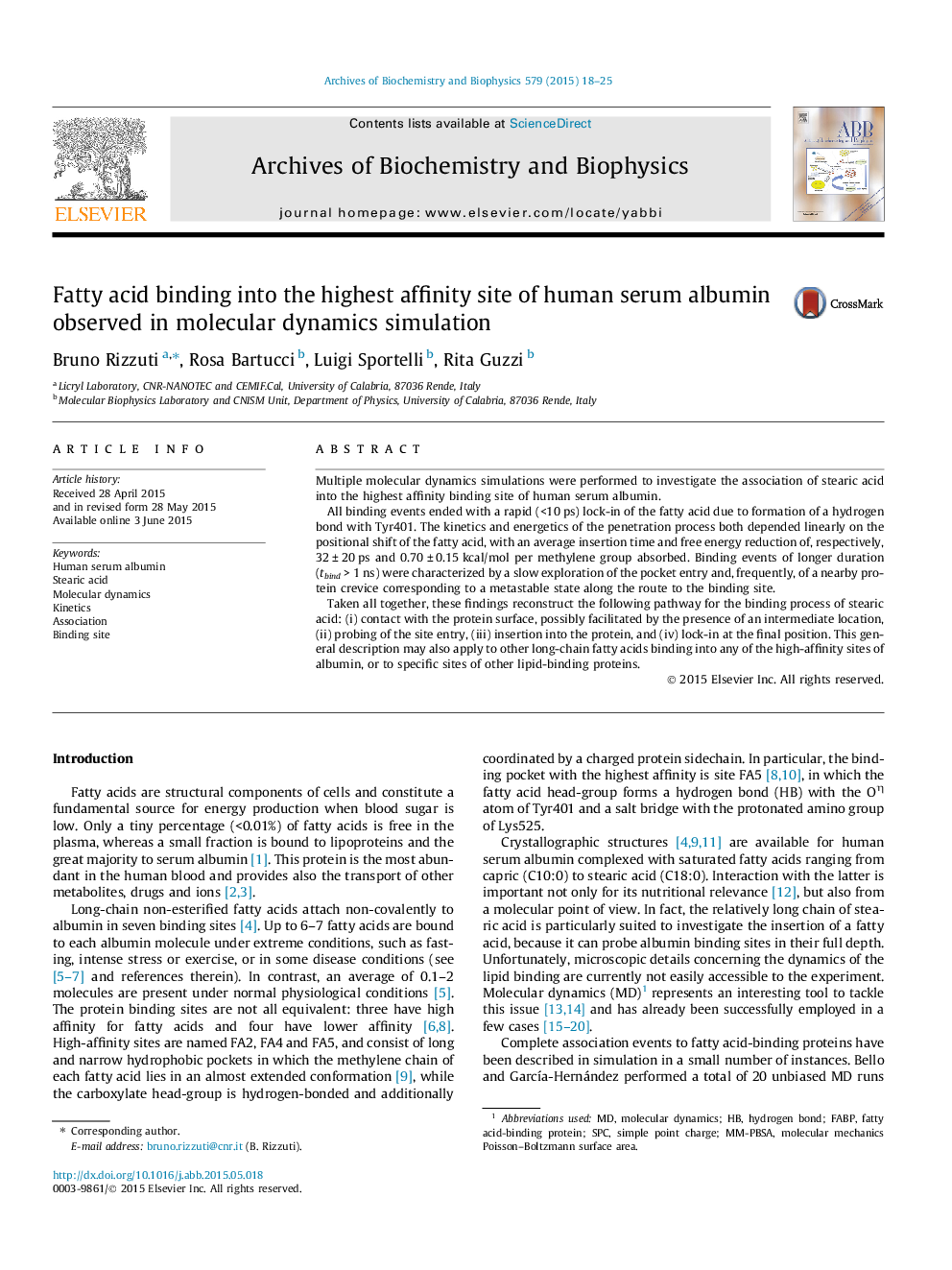| Article ID | Journal | Published Year | Pages | File Type |
|---|---|---|---|---|
| 1924903 | Archives of Biochemistry and Biophysics | 2015 | 8 Pages |
•Simulations were used to study the association of stearic acid in site FA5 of albumin.•Both kinetics and energetics of the ligand insertion were accurately determined.•A metastable state along the route towards the binding site was identified.•A comprehensive pathway is suggested for the binding of stearic acid in site FA5.
Multiple molecular dynamics simulations were performed to investigate the association of stearic acid into the highest affinity binding site of human serum albumin.All binding events ended with a rapid (<10 ps) lock-in of the fatty acid due to formation of a hydrogen bond with Tyr401. The kinetics and energetics of the penetration process both depended linearly on the positional shift of the fatty acid, with an average insertion time and free energy reduction of, respectively, 32 ± 20 ps and 0.70 ± 0.15 kcal/mol per methylene group absorbed. Binding events of longer duration (tbind > 1 ns) were characterized by a slow exploration of the pocket entry and, frequently, of a nearby protein crevice corresponding to a metastable state along the route to the binding site.Taken all together, these findings reconstruct the following pathway for the binding process of stearic acid: (i) contact with the protein surface, possibly facilitated by the presence of an intermediate location, (ii) probing of the site entry, (iii) insertion into the protein, and (iv) lock-in at the final position. This general description may also apply to other long-chain fatty acids binding into any of the high-affinity sites of albumin, or to specific sites of other lipid-binding proteins.
Graphical abstractFigure optionsDownload full-size imageDownload high-quality image (298 K)Download as PowerPoint slide
